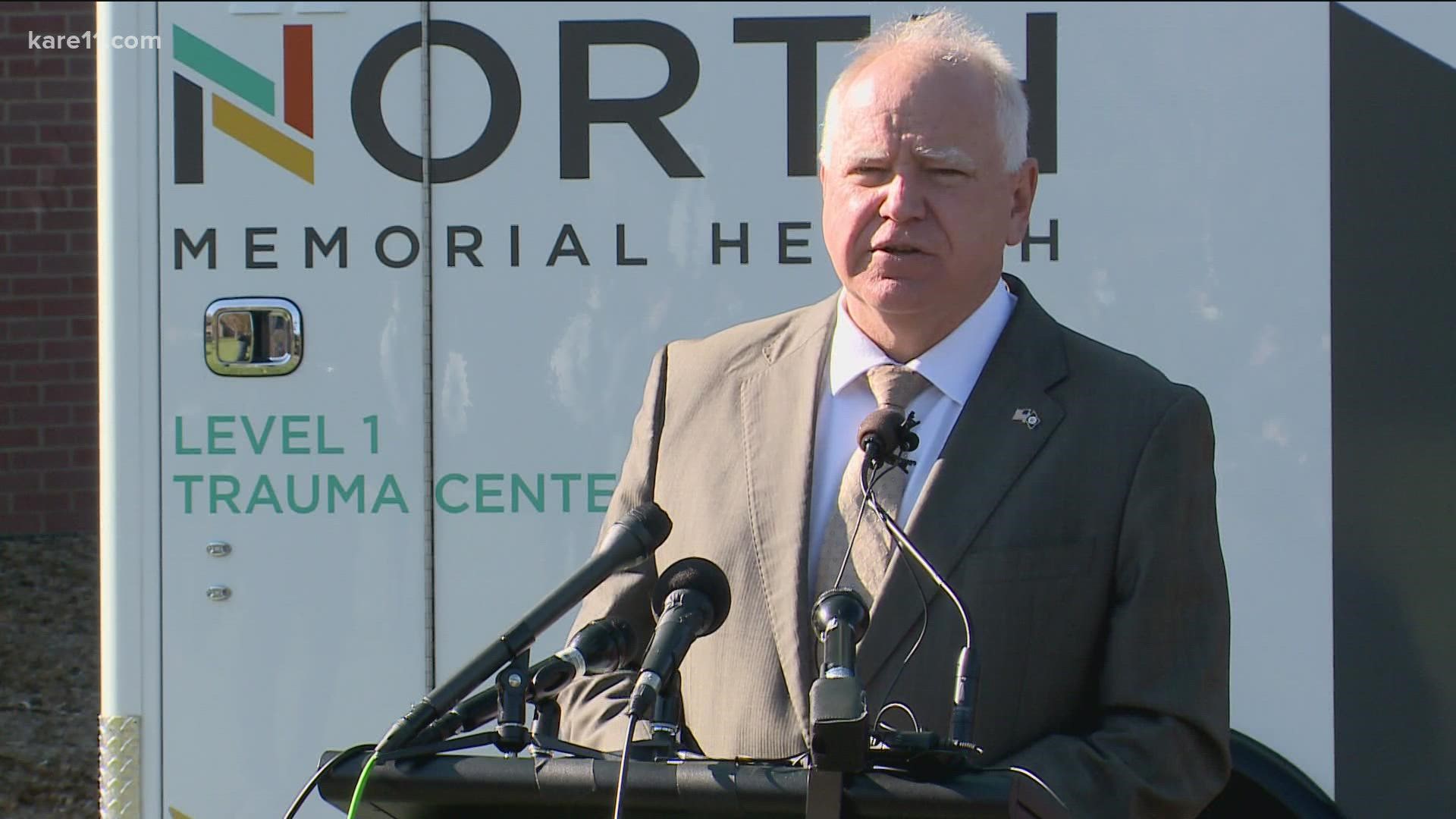ST PAUL, Minn. — Monday, Oct. 18
- Daily hospitalizations top 1,000 for first time since Dec. 2020
- General Colin Powell dies of COVID complications, had blood cancer
- Walz: National Guard "on alert" to help with long-term care staffing
- Judge won't block vaccine mandate for MN health workers
- New community testing site to open in Morris, MN
- Biden: Vaccines for children should be available next month
Hospitalizations from COVID-19 continue to trend upwards in Minnesota, as do the number of lives lost to the virus.
The latest data released by the Minnesota Department of Health (MDH) shows 1,007 people being treated for COVID in hospitals across the state as of Friday, with 246 of them in ICUs. Hospital bed availability remains low in a number of areas across the state, including the Twin Cities metro system where just 8 ICU beds are listed as open (1.3% of supply) and 51 non-ICU beds are available (1.4% of supply).
In total, nearly 40,000 people have been hospitalized with the virus in Minnesota since the start of the pandemic.
MDH is reporting an additional 29 deaths, with one dating back to September and out of the current reporting month. Four of those deaths were reported in Hennepin County, with one of them involving a person in their mid-to-late 30s. Total fatalities in the state have reached 8,436.

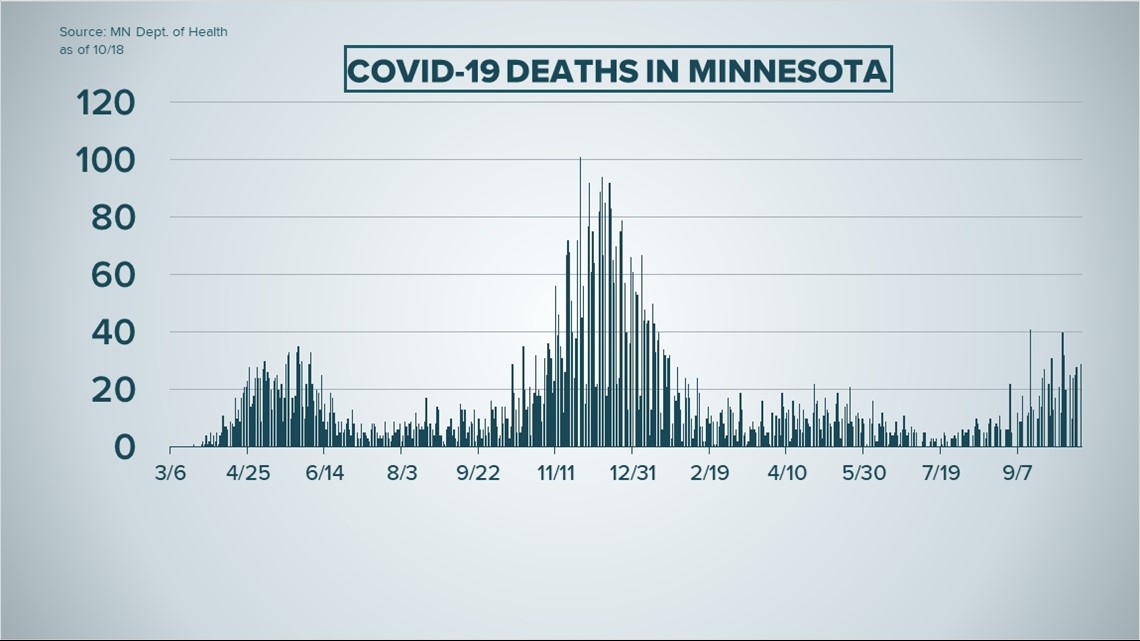
There are 2,868 new COVID infections in the state, based on results from 44,644 tests (35,632 PCR, 9,012 antigen) processed in private and state labs. Health officials consider a positive PCR test a confirmed COVID case, while a positive antigen-rapid test is considered a probable case.
Total cases of COVID-19 have risen to 758,252 in Minnesota.

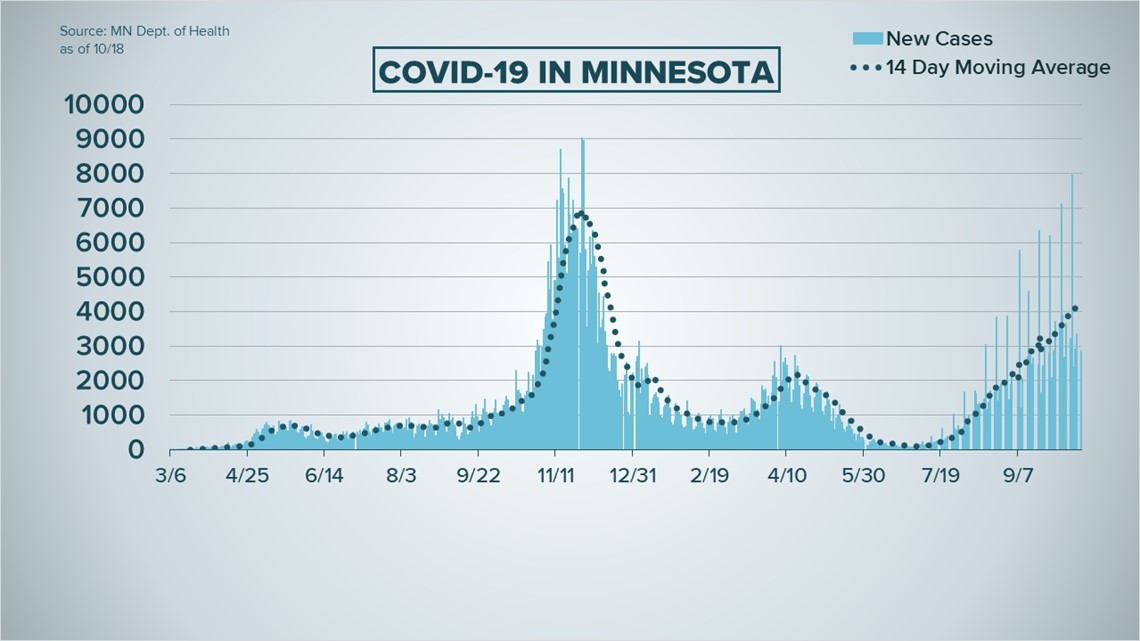
The state vaccine dashboard says 74.2% of Minnesotans age 16 and up have received at least one COVID shot (3,438,442 people) while 3,270,542 of those have completed the shot series and are considered fully vaccinated (70.7%).
MDH says 151,342 children between 12 and 15 are in the fully vaccinated category.

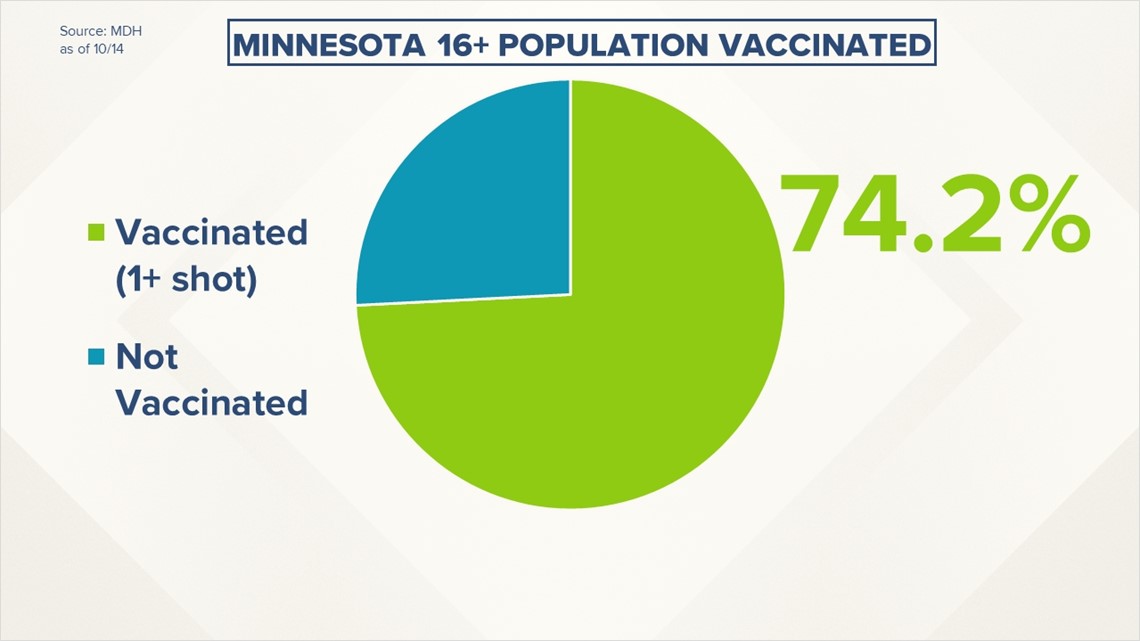
Friday, Oct. 15
11:30 a.m.
Hospitalizations from COVID-19 continued to tick up according to the latest numbers released by the Minnesota Department of Health (MDH) on Friday, with hospital bed use for COVID-19 patients now one shy of the 1,000 mark.
Of the 999 patients currently hospitalized with COVID, MDH data shows 746 are in non-ICU beds, and 253 are in the intensive care unit. All of the hospital bed totals are the highest since December 2020.


Also Friday, MDH reported 3,352 additional confirmed and probable cases of COVID-19 in the state, bringing the statewide total to 755,401 positive COVID cases since the pandemic began in March 2020.
An additional 28 COVID-19 deaths were also reported on Friday, including one person in their 30s and six people in their 50s. Friday's numbers bring the pandemic fatality total to 8,407 so far in Minnesota.

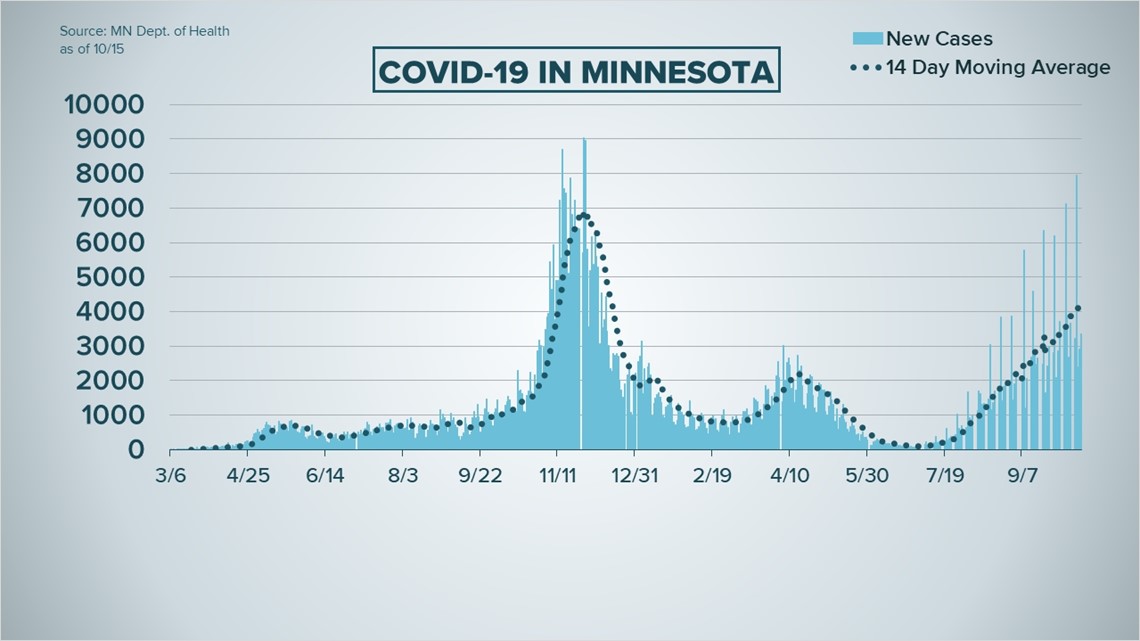
10:30 a.m.
After touring North Memorial Hospital in Robbinsdale, Governor Tim Walz and Minnesota Department of Health Commissioner Jan Malcolm spoke to the media about new steps the state is taking in its fight against COVID-19.
Hospitalizations related to COVID-19 remain high in Minnesota. To alleviate stress on the health care system and free up hospital bed space, Walz announced Friday that he's putting the National Guard on alert to help with staffing at long-term care facilities. The governor is also expanding access to the COVID-19 Emergency Staffing Pool, which will let long-term care facilities request short-term emergency temporary staffing if they're dealing with a worker shortage due to a COVID outbreak.
Walz says the number of Guard soldiers who will be deployed to help out and their exact roles have yet to be determined.
The uptick in infections, a shortage of workers and outbreaks at care facilities are causing the system to back up. Patients who would normally move from hospitals to long-term or rehab care centers are unable to, as those facilities are shorthanded. Instead, they are forced to stay at the hospitals that provided initial care, filling beds that would otherwise be used for new and more needy patients.
At this time around 400 Minnesota hospital patients are waiting for beds to open up at other care centers so they can transition.
“Rising COVID-19 cases have left our hospitals too crowded, and we need action now,” said Governor Walz. “That’s why I’m putting the National Guard on alert and taking critical steps to help free up hospital beds and make sure that Minnesotans can continue to get the care they need.”
Walz and North Memorial Health CEO Dr. Kevin Croston spoke emotionally of the toll the uptick in COVID hospitalizations is taking on frontline medical staff, who are working extra days and hours to keep up with the flood of patients.
"We continue to hear about the loss of health care workers because of the stress that goes into this," Walz said. "It's real, these are folks who are committed to doing this (caring for patients) but there's only so much they can go through."
The Department of Human Services has also been directed to free up capacity at state long-term care facilities, so these locations can take patients that are currently in hospitals and free up more beds.
Here is a quick glance at the COVID-19 Action Plan the governor laid out Friday.
- Putting the National Guard on alert to provide staffing support at Minnesota’s long-term care facilities;
- Expanding access to the COVID-19 Emergency Staffing Pool, which allows long-term care facilities to request short-term emergency temporary staffing if they’re experiencing a staffing shortage due to an outbreak of COVID-19 at their facility; and
- Directing the Department of Human Services to free up capacity at state long-term care facilities.
Walz told reporters the National Guard will also help with a new Community Rapid Testing Program at state-run testing sites in Stillwater, Hutchinson and Crookston. These locations will offer antigen tests that deliver results in a few minutes to Minnesotans currently experiencing COVID symptoms.
Health officials consider a positive antigen test a probable COVID case, while PCR tests, which take longer to process, are considered confirmed cases when positive results are returned.
To meet higher testing demands, the state is partnering with local public health agencies across Minnesota to get more rapid tests to community testing clinics and other locations.

